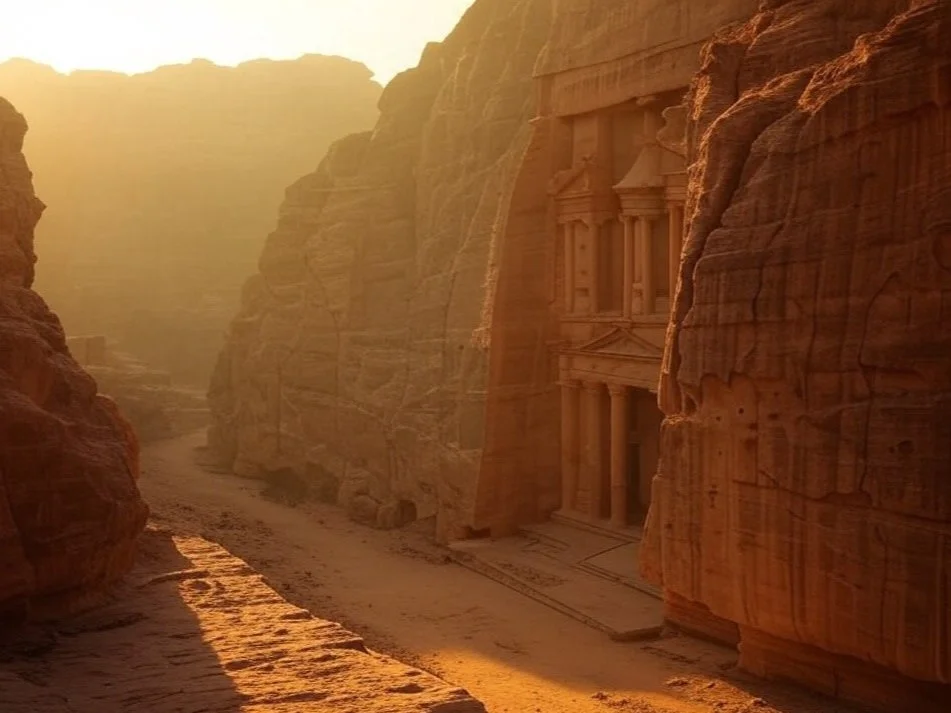History and Architectural Brilliance of Petra
Petra, often referred to as the "Rose City" due to its pink-hued rock formations, was established by the Nabataeans around the 4th century BCE. This ancient city, located in present-day Jordan, served as the capital of the Nabataean Kingdom. Renowned for its impressive rock-cut architecture and advanced water management system, Petra stands as a testament to the ingenuity of its builders.
One of the most iconic structures in Petra is Al-Khazneh (the Treasury), a magnificent tomb carved directly into the sandstone cliffs. Other notable sites include the Monastery, the Royal Tombs, and the Siq, a narrow gorge that serves as the main entrance to the city. The Nabataeans' ability to harness and distribute water in the arid desert enabled them to thrive, showcasing their advanced engineering skills.
Petra as a Trade Hub
Petra's strategic location made it a crucial center for trade, connecting major caravan routes between Arabia, Egypt, and the Mediterranean. The city flourished as a commercial hub, facilitating the exchange of goods such as spices, incense, textiles, and precious metals. The wealth accumulated through trade allowed the Nabataeans to construct grand architectural wonders and develop a sophisticated society.
However, with the rise of maritime trade routes and shifting economic conditions, Petra's significance gradually declined. By the 7th century CE, the city was largely abandoned and remained unknown to the Western world until its rediscovery by Swiss explorer Johann Ludwig Burckhardt in 1812.
Preservation Efforts and UNESCO Recognition
In 1985, Petra was designated a UNESCO World Heritage Site, recognizing its historical and cultural importance. Conservation efforts have since been implemented to protect the site from natural erosion, climate change, and human impact. Organizations such as UNESCO and the Jordanian government collaborate to ensure sustainable tourism practices and restoration projects.
Despite ongoing challenges, Petra remains one of the world's most visited archaeological sites, attracting millions of tourists each year. Its enduring legacy continues to inspire historians, archaeologists, and travelers alike, preserving the rich heritage of the Nabataeans for future generations.
Conclusion
Petra stands as a remarkable example of ancient ingenuity, architectural brilliance, and cultural exchange. As efforts to preserve this marvel continue, it remains a symbol of resilience and human achievement, offering a glimpse into the vibrant past of the Nabataean civilization.







